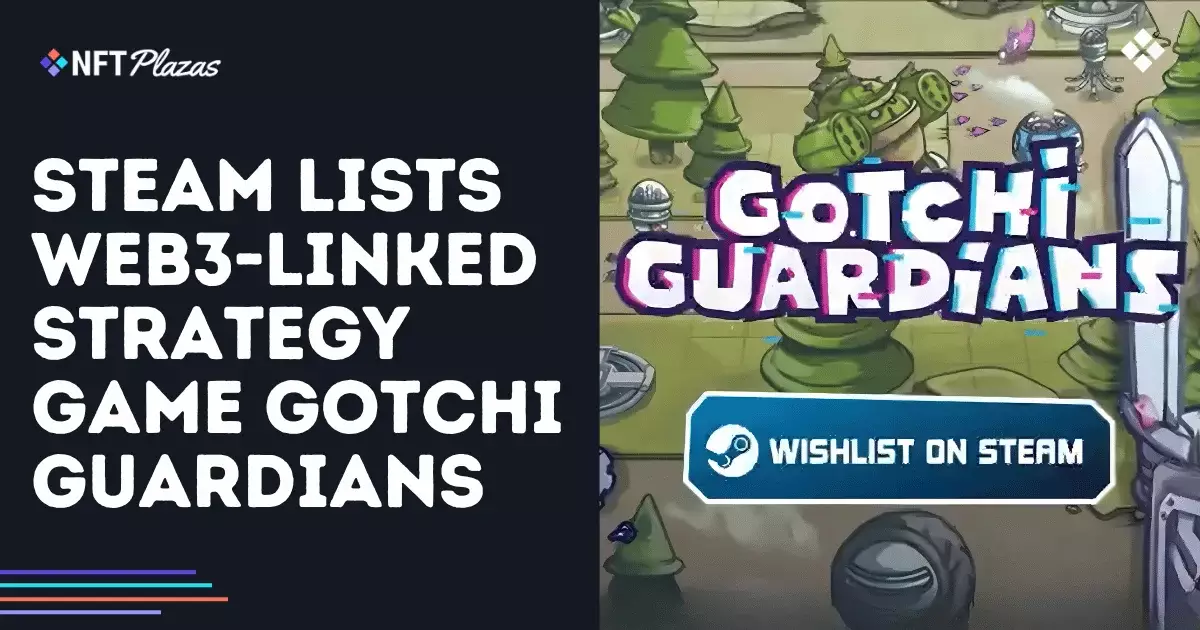The recent entry of Gotchi Guardians into Steam’s gaming ecosystem underscores a pivotal moment that demands skepticism rather than blind optimism. While proponents celebrate the integration of blockchain technology within the traditional gaming landscape, critics argue that it represents a superficial and potentially exploitative trend masked as innovation. It’s essential to dissect whether these so-called “NFT games,” like Gotchi Guardians, truly enhance the gaming experience or merely serve as a vehicle for profit maximization and corporate control. In doing so, it becomes evident that the enthusiasm surrounding NFT gaming may be misplaced, and long-term sustainability is questionable at best.
The fundamental concern is whether blockchain integration adds meaningful value or simply exists as a veneer. For Gotchi Guardians, the use of NFTs for cosmetic skins and optional token payments appear circumstantial rather than foundational. This superficiality raises doubts about whether these features truly enrich gameplay or serve as just another method for developers to monetize player engagement. The nuanced reality is that the core mechanics—multiplayer tower defense, roguelite elements, and competitive dynamics—are not inherently improved by blockchain technology. Instead, blockchain’s role often distracts from gameplay balance, depth, and player satisfaction, creating a false narrative of innovation.
Exposing the Illusion of Player Empowerment in NFT Ecosystems
One of the more insidious aspects of NFT gaming is the purported notion of “player ownership.” Gotchi Guardians claims that players who own Aavegotchi NFTs can use them as cosmetic overlays, implying a sense of control and real asset ownership. Yet, this narrative is largely superficial. The reality is that these NFTs, much like digital collectibles in other contexts, are often controlled by centralized platforms and subject to the whims of a few corporate entities. The idea of “ownership” becomes cloudy when transparency and true decentralization are absent.
Furthermore, the promotion of optional crypto payments—via $GHST—further complicates the narrative. While these transactions are presented as non-essential, they subtly introduce a tiered experience. Players willing to spend real money might access cosmetic options or other superficial perks, but this dynamic risks fostering a pay-to-play environment masked behind a façade of community and skill. It’s a tactic designed to extract revenue rather than to genuinely reward ingenuity or strategic mastery.
Genuine Innovation or a Cunning Marketing Move?
Pixelcraft Studios, bolstered by industry veterans like Jason Slama, certainly brings credibility to the project. Their pedigree, tied to titles such as Gwent and The Witcher, suggests a level of craftsmanship that could elevate the game’s quality. However, the question remains whether the integration of blockchain elements truly aligns with these high standards or simply capitalizes on the current buzz.
The game’s mechanics—multiplayer dynamic, roguelite randomness, strategic character choices—are promising on their own. But layering blockchain features over an already competent game risks diluting user experience or creating dissonance. If blockchain elements are not central to gameplay, they become distractions rather than enhancements. This approach suggests that the primary aim might be to capitalize on the NFT craze rather than to develop a groundbreaking gaming experience rooted in meaningful blockchain utility.
It’s also worth noting that the long-term support plans—adding new characters, maps, seasonal events—are standard in successful games. Still, their connection to blockchain features is ambiguous. Will these new elements genuinely innovate gameplay, or will they mostly serve to sustain a monetization scheme that hinges on optional NFT ownership and crypto payments?
The Future of NFT Gaming: Is It Sustainable or Short-Lived?
From a broader perspective, the sustainability of NFT gaming is highly questionable. Despite some early excitement, the NFT bubble may be nearing its peak. For many players, the allure of digital ownership is overshadowed by concerns over environmental impact, market volatility, and a lack of tangible benefits. Games like Gotchi Guardians risk being remembered less as innovative titles and more as fleeting experiments in monetization.
Critics from the center-right spectrum should remain cautious, recognizing that the future of gaming lies in delivering quality entertainment with fair monetization strategies that prioritize player experience over corporate profits. Blockchain-driven features should serve as an enhancement, not a distraction, ensuring they further gameplay rather than undermine it. Otherwise, NFT gaming risks alienating core audiences, perpetuating a cycle of hype and disillusionment.
The true challenge for developers like Pixelcraft Studios will be to prove that blockchain can serve a meaningful purpose—such as true digital scarcity, player-driven economies, or innovative gameplay mechanics—rather than merely mimicking traditional monetization methods under the guise of “ownership.” Until then, skepticism remains the most rational stance in assessing whether NFT gaming is a fleeting fad or a transformative shift.

